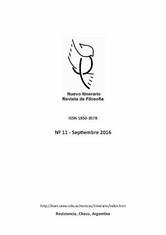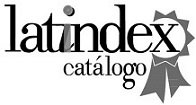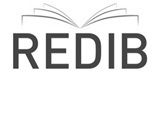Around the “Image” in Paul Ricoeur: Verbal and Non-verbal Aspects. From the Metaphorical Statement to the Discursive Work
DOI:
https://doi.org/10.30972/nvt.2017579Keywords:
metaphorical iconicity, narrative iconicity, pictorial iconicity, catharsis, affectivityAbstract
In La métaphore vive, Paul Ricoeur addresses the iconicity of the metaphorical trope by working, on the one hand, on the verbal or semantic aspect of the “image” arising from the metaphorical statement and, on the other hand, on its non-verbal aspect, its sensitive side. Our intention, on the one hand, is to inscribe Ricoeur's theory of metaphor in the “pictorial turn” that took place in the mid-1990s. The first hypothesis is that the iconicity of the metaphorical trope, as Ricoeur works it, crosses the tripartite stage formed by the semiotic, phenomenological-hermeneutic and anthropological currents in which the “pictorial turn” trifurcates. We also think that this triple inscription of iconicity linked to metaphorical theory goes beyond the level of the utterance towards the transphrastic order that opens up the discursive work tackled by our author in Temps et récit. Again under the Aristotelian gesture, the second hypothesis is that catharsis, together with the moral instruction it produces, translates into an increase in our legibility of the world that produces a cognitive as well as an affective transposition. Before closing this paper, and leaving open a couple of questions as a kind of opening for further research, we will try to situate the conclusions in the framework of the dualisms revisited, this time, by the ‘affective turn’, also born in the mid-1990s.
References
Ahmed, S. (2015). La política cultural de las emociones (C. Olivares Mansuy, Trad.). México D.F.: UNAM.
Agustín, San (2019). Confesiones (A. Encuentra Ortega, Trad.). Madrid: Gredos.
Aristóteles (1947). Poética (E. Schlesinger, Trad.). Buenos Aires: Emecé Editores.
Aristóteles (1995). Física (A. Vigo Trad.). Buenos Aires: Biblos.
Aristóteles (1999). Retórica (Q. Racionero Trad.). Madrid: Gredos.
Bachelard, G. (1971). The Poetics of Reverie. Childhood, Language, and the Cosmos (Trad. Russell D.). Boston: Beacon Press.
Bachelard, G. (2019). La poética de la ensoñación (Vitale I. Trad.). México D.F.: Fondo de Cultura Económica.
Belting. H. (1994). Likeness and Presence. A History of the Image before the Era of Art (E. Jephcott Trans.). Chicago: University of Chicago Press.
Belting, H. (2007). Antropología de la imagen (G. M. Vélez Espinosa Trad.). Buenos Aires-Madrid: Katz Editores.
Boehm, G. (2011). El giro icónico. Una carta. Correspondencia entre Gottfried Boehm y W. J. Thomas Mitchell (I). En García Varas, A. (ed.), Filosofía de la imagen (pp. 57-70). Salamanca: Ediciones Universidad de Salamanca.
Boehm, G. (2017). Cómo generan sentido las imágenes. El poder de mostrar (L. Báez Rubí Trad.). México D.F.: UNAM.
de Estrada, J.M. (1947). Nota preliminar. Aristóteles, Poética (E. Schlesinger Trad.) (pp. 6-15). Buenos Aires: Emecé Editores.
Deleuze, G. (1984). La imagen-movimiento. Estudios sobre cine 1 (I. Agoff, Trad.). Barcelona: Paidós.
Deleuze, G. (1986). La imagen-tiempo. Estudios sobre cine 2 (I. Agoff, Trad.). Barcelona: Paidós.
Eco, U. (1995). Semiótica y filosofía del lenguaje (R. Pochtar Trad.). Barcelona: Lumen.
Flusser, V. (1990). Hacia una filosofía de la fotografía (E. Molina, Trad.). México D.F.: Trillas.
Flusser, V. (2011). Hacia el universo de las imágenes técnicas (F. Zamora Águila, Trad.). México D.F.: UNAM.
Frege, G. (2019). Über Sinn und Bedeutung. Sttutgart: Reclams Universal-Bibliothek.
Gabriel, S. (2020). Algunos conflictos de las imágenes en el marco del giro icónico. Esbozos de una ontología a partir de Paul Ricoeur. Escritura e imagen, Vol. 16, Madrid: Universidad Complutense de Madrid, pp. 155-172. Versión digital: https://revistas.ucm.es/index.php/ESIM/article/view/73031/4564456555131
Gabriel, S. (2021). Acerca del fenómeno de la ‘imagen’ en las Ciencias Humanas. Su fundamentación teórica y su proyección práctica. Analogía filosófica: revista de filosofía, investigación y difusión, año 35, Nro. 1, Santiago de México: Centro de Estudios de la Orden de Predicadores, pp. 27-59.
Gabriel, S. (2022). Iconicidad, escopía y hermenéutica. Una aproximación filosófica a partir de Paul Ricoeur. En Diez Fischer F., Gabriel S., Lythgoe E. y Mena P. (comps.), Paul Ricoeur: junto, más allá y por debajo de su obra (pp. 165-174). Buenos Aires: Editorial S.B. en colaboración con el sello editorial de la UFRO (Universidad de La Frontera, Temuco, Chile).
Gabriel, S. (2023). Iconicidad y autobiografía a partir del proyecto filosófico de Paul Ricoeur. Revista Latinoamericana de Filosofía. Vol. 49, 2, pp. 261-277. Versión digital: https://rlfcif.org.ar/index.php/RLF/article/view/374/209
Gadamer, H-G. (2003). Verdad y método (Agud Aparicio A. y de Agapito, R. Trads.). Salamanca: Sígueme.
Goodman, N. (2010). Los lenguajes del arte. Aproximación a la teoría de los símbolos (J. Cabanes, Trad.). Barcelona: Paidós.
Guattari, F. (2013). Líneas de fuga. Por otro mundo de posibles (P. Ires, Trad.). Buenos Aires: Cactus.
Heidegger, M. (1997). Ser y tiempo (J. E. Rivera, Trad.). México D.F.: Fondo de Cultura Económica.
Heidegger, M. (2010). Caminos de bosque (H. Cortés y A. Leyte, Trads.). Madrid: Alianza Editorial.
Henry, A. (1971). Métaphore et Métonymie. Paris: Klincksieck.
Hopkins, R. (1998). Picture, Image and Experience. A Philosophical Inquiry. Cambridge: Cambridge University Press.
Husserl, E. (1980). E. Marbach (ed.), Phantasie, Bildbewusstsein, Erinnerung: Zur Phänomenologie der Anschaulichen Vergegenwärtigungen Texte aus dem Nachlass (1898–1925) (Gesammelte Werke, 23). Leiden: Martinus Nijhoff.
Hyman, J. (2003). Subjectivism in the Theory of Pictorial Art. The Monist, Vol. 86, No. 4, Oxford: Oxford University Press, pp. 676-701.
Jonas, H. (1966). The phenomenon of life. Toward a philosophical Biology. New York: Harper & Row.
Kant, I. (1989). Crítica de la razón pura (P. Ribas, Trad.). Madrid: Taurus.
Körner, S. (1977). Kant (I. Zapata Tellechea, Trad.). Madrid: Alianza.
Lopes, D. (2005). Sight and Sensibility. Evaluating Pictures. Oxford: Oxford University Press.
Peirce, Ch. S., (1974). La ciencia de la semiótica (B. Bugnl Trad.). Buenos Aires: Nueva Visión.
Platón (1988). Diálogos III. Fedón. Banquete. Fedro (G. García Gual, M. Martínez Hernández, E. Lledó Iñigo Trads.). Madrid: Gredos.
Racionero, Q. (1999). Introducción. Aristóteles, Retórica (pp. 7-149). Madrid: Gredos.
Redfield J. M. (1975). Nature And Culture In The Iliad: The Of Hector. The University Chicago Press: Chicago & London.
Rehkämper, K. (2002). Bilder, Ähnlichkeit und Perspektive. Auf dem Weg zu einer neuen Theorie der bildhaften Repräsentation. Band 9 aus der Reihe “Bildwissenschaft”. Wiesbaden: Deutscher Universitätsverlag.
Ricoeur, P. (1949). Philosophie de la volonté. Le volontaire et l'involontaire, Paris: Aubier.
Ricoeur, P. (1975). La métaphore vive. Paris: Seuil.
Ricoeur, P. (1976). Interpretation Theory. Discourse and the Surplus of Meaning. Texas Christian Press: Fort Worth.
Ricoeur, P. (1977). El discurso de la acción (P. Calvo, Trad.). Madrid: Cátedra-Teorema.
Ricoeur, P. (1983). Temps et récit. Tome 1. L'intrigue et le récit historique. Paris: Seuil.
Ricoeur, P. (1984). Temps et récit. Tome 2. La configuration dans le récit de fiction. Paris: Seuil.
Ricoeur, P. (1984a). Appropriation. En Thompson, J., Trans. and Ed. Hermeneutics & the Human Sciences (pp. 182-193). Cambridge: Cambridge University Press.
Ricoeur, P. (1985). Temps et récit. Tome 3. Le temps raconté. Paris: Seuil.
Ricoeur, P. (1986). Du texte à l'action. Essais d’herméneutique II. Paris: Seuil.
Ricoeur, P. (1990). Soi-même comme un autre. Paris: Seuil.
Ricoeur, P (1994). Sur un autoportrait de Rembrandt. En Ricoeur, P., Lectures 3 - Aux Frontières de la Philosophie (pp. 13-15). Paris: Seuil.
Ricoeur, P. (1997). Narratividad, fenomenología y hermenéutica. En G. Aranzueque ed., Horizontes del relato. Lecturas y conversaciones con Paul Ricoeur (G. Aranzueque y otros, Trads.) (pp. 479-495). Madrid: Cuaderno Gris.
Ricoeur, P. (2000). La mémoire, l'histoire, l'oubli. Paris: Seuil.
Ricoeur, P. (2002). Cinque lezioni. Dal linguaggio all’immagine. Palermo: Centro Internazionale Studi di Estetica.
Ricoeur, P. (2004). Parcours de la reconnaissance. Paris: Editions Stock, collections Les Essais.
Ricoeur, P. (2024). Lectures on Imagination, Taylor G. H., Sweeney R. D., Amalric J-L., and Crosby P. F. (Eds.). Chicago: The University of Chicago Press.
Sachs-Hombach. K (2009). Bildtheorien: anthropologische und kulturelle Grundlagen des Visualistic Turn. Frankfurt am Main: Suhrkamp.
Sachs-Hombach, K. (2011). LA BILDWISSENSCHAFT ALEMANA Y LAS IMÁGENES COMO SIGNOS. UNA ENTREVISTA CON KLAUS SACHS-HOMBACH. En García Varas, op. cit. (pp. 309-345).
Scholz, O.R. (2004). Bild, Darstellung, Zeichen: Philosophische Theorien bildlicher Darstellung. Frankfurt am Main: Vittorio Klostermann GmbH.
Spinoza, B. (2000). Ética demostrada según el orden geométrico (A. Domínguez, Trad.). Madrid: Trotta.
Spinoza, B. (2003). Tratado Teológico-Político (E. Reus, Trad.). Madrid: Alianza.
Waldenfels, B. (2011). Espejo, huella y mirada. Sobre la génesis de la imagen. En García Varas, A. (ed.), op. cit. (pp. 155-178).
Waldenfels, B. (2020). Imágenes entre pathos y eidos. Apuntes filosóficos, Revista semestral, Vol. 29 Nº 56 (B. Ávalos Trad.). Caracas: Escuela de Filosofía bajo los auspicios del Consejo de Desarrollo Científico y Humanístico (CDCH-UCV), pp. 132-145.
Wiesing, L. (2009). Artificial Presence: Philosophical Studies in Image Theory, (N. F. Schott, Trad.). Stanford: Stanford University Press.
Zamora Águila, F. (2015). Filosofía de la imagen. Lenguaje, imagen y representación. México D. F.: UNAM.
Published
Versions
- 2024-09-26 (4)
- 2024-06-28 (1)
How to Cite
Issue
Section
License

This work is licensed under a Creative Commons Attribution-NonCommercial 4.0 International License.
Les autores ceden a Nuevo Itinerario los derechos de publicidad de sus trabajos, toda vez que hayan sido admitidos como parte de alguno de sus números. Ello no obstante, les autores retienen los derechos de propiedad intelectual y responsabilidad ética así como la posibilidad de dar difusión propia por los medios que consideren.












51.jpg)

